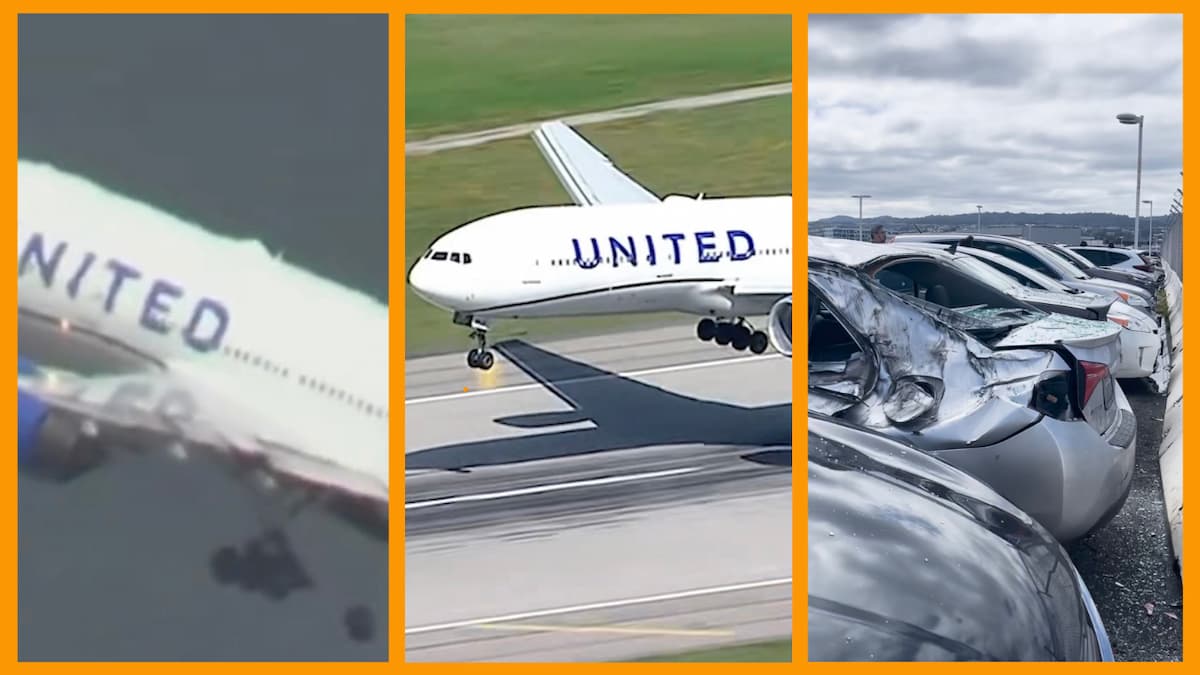You may have read or seen news stories about Boeing planes being unsafe, or having some defects that the company may not have reported. Even more strange, two men who alerted authorities about the problems ended up dead within weeks of each other.
This didn’t help Boeing’s cause at all and many speculate that the company had something to do with the deaths. Regardless, there are definitely some issues with Boeing planes right now, so which are the least safe?>
To be clear, there are no currently unsafe Boeing planes in the air. The ones with issues have were grounded until the problems were corrected. However, they’ve had a string of incidents this year:
On Jan. 5, a Boeing 737 Max 9, operated by Alaska Airlines, departed Portland airport and was forced to land after a door plug flew off mid-air, causing the cabin to lose pressure and the oxygen masks to drop. Poor installation was blamed for the incident, and the Federal Aviation Administration grounded all those planes. After that, both United Airlines and Alaska Airlines reported several Max 9 planes had faulty door plugs. In fact, in the last three years, there have been 1,800 service issues with the 737 Max planes.
So, if there’s a plane to avoid, it’d be the 737 Max series, particularly the Max 7, Max 9, and Max 10. But the issues aren’t confined to this model.
On Jan. 13, a Boeing 737-800, operated by All Nippon Airways, had to cancel a flight when a window in the cockpit cracked. On Jan. 18, a social media video showed a Boeing 747-8 operated by Atlas Air with flames coming out of it. It was grounded. On January 20, a Boeing 757 operated by Delta Airlines was taxiing on the runway when the front nose fell off and rolled some distance from the plane.
On Feb. 6, a United Airlines flight had to deal with stuck rubber pedals. That’s currently being investigated by the National Transportation Safety Board (NTSB). On Mar. 7, A Boeing 777-200 had to reroute after one of its wheels fell off and damaged a car. On Mar. 11, a Boeing 787-9 Dreamliner had a technical malfunction that made the plane drop in the middle of the flight. 50 people were injured.
On March 13, a Boeing 777-300 operated by United Airlines experienced a fuel leak on the way to Sydney from San Francisco and had to turn around. Finally, on March 15 another United Airlines Boeing, this time a 737-800, lost an exterior panel during a flight from San Francisco to Oregon.
All these incidents beg the question, what’s going on over at Boeing? Well for one, its stock is tanking. Also, CEO Dave Calhoun announced he was leaving as well. The thing is, these are not new issues with Boeing. In 2018 and 2019, 737 MAX 8 planes crashed in Indonesia and Ethiopia, with 346 people dead. Boeing reached a $2.5 billion settlement with the Justice Department for lying to the FAA about a problem with the plane’s Maneuvering Characteristics Augmentation System (MCAS).
Does this mean you should avoid flying on a Boeing? Statistically, the chances of being in an airline incident like the ones mentioned above are very low. On the day of the Alaska Airlines incident, there were 123,515 flights without incident. The human brain has a way of taking an isolated incident and making it seem like there’s a good chance of that happening. That’s called a “dread risk,” and it can be exacerbated by the media.
Trying to avoid a Boeing or planes in general is no guarantee of safety, considering all of the other inherent dangers we face on a daily basis. Aviation Journalist John Walton points out that the aviation industry has a wide safety net for issues with planes, with “regulators like the US Federal Aviation Administration (FAA), the European Union Aviation Safety Agency (EASA), investigators like the National Transportation Safety Board (NTSB), unions of pilots and flight attendants, nonprofits like the Flight Safety Foundation, and many more — all working together with airplane manufacturers, airlines and safety standards organizations to keep us safe when we fly.”
Walton also shared that he regularly interviews experts on safety, companies that build planes, different airlines and all arms of the airline safety apparatus. “The safety system within aviation is still there, it’s reacting to the Boeing issues in ways that keep me confident in it, and I still trust it to keep us all safe,” Walton said.
Boeing has been hit hard financially by all this. Besides the stock drop and the CEO exit, airlines stopped ordering planes from the company. There were some sales of the 737 MAX 10, but that planes isn’t allowed to fly yet because of a de-icing issue. There are probably some weighty fines and lawsuits on the way for the company as well. It’s already paid Alaska Airlines $150 million for having to ground its planes after the door plug incident. Still, it’s not like Boeing has a bunch of competitors biting at its heels. Regardless, there’s a lot of work to do at the company to repair the massive damage to its reputation. Time will tell if that actually happens
